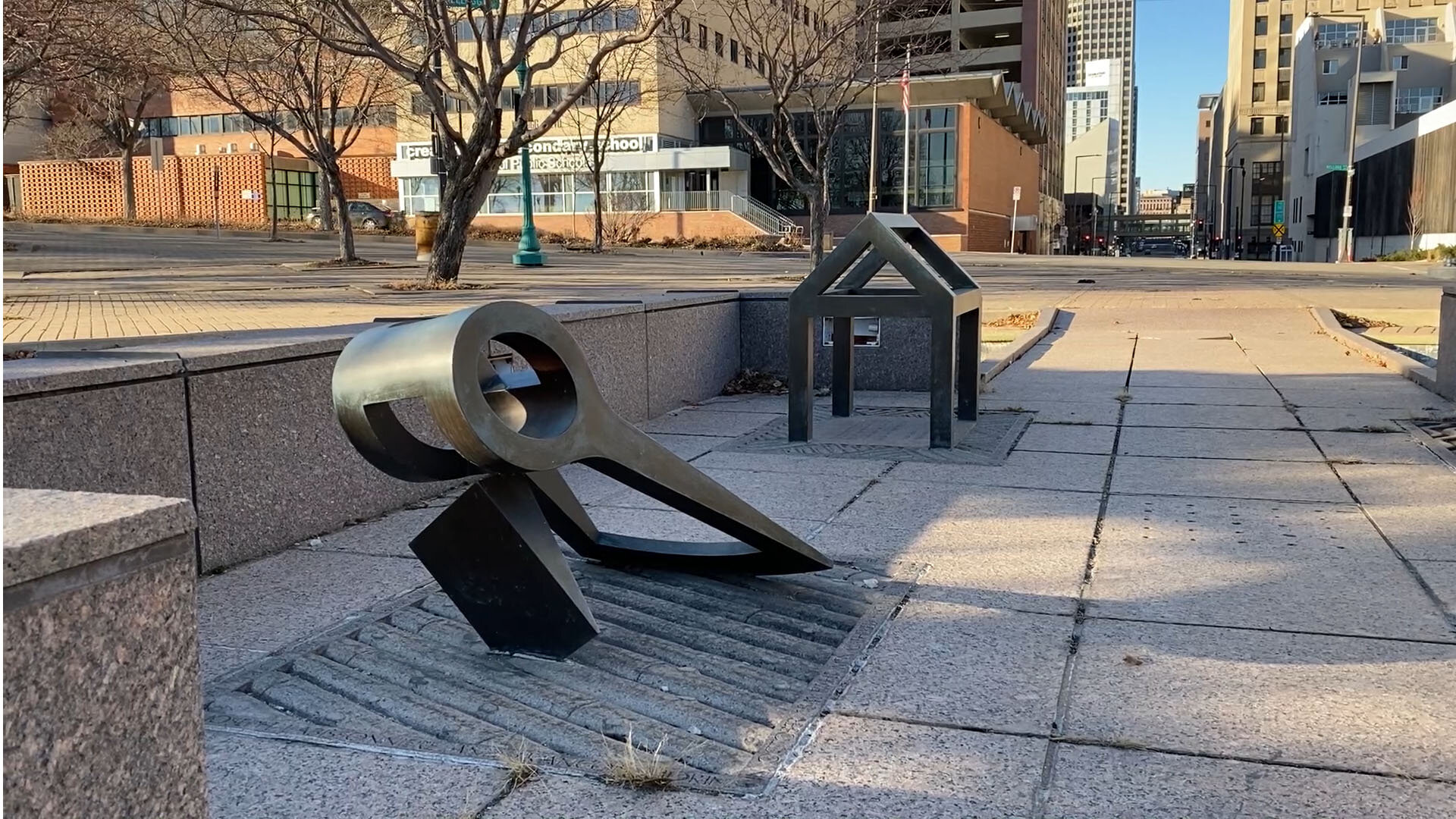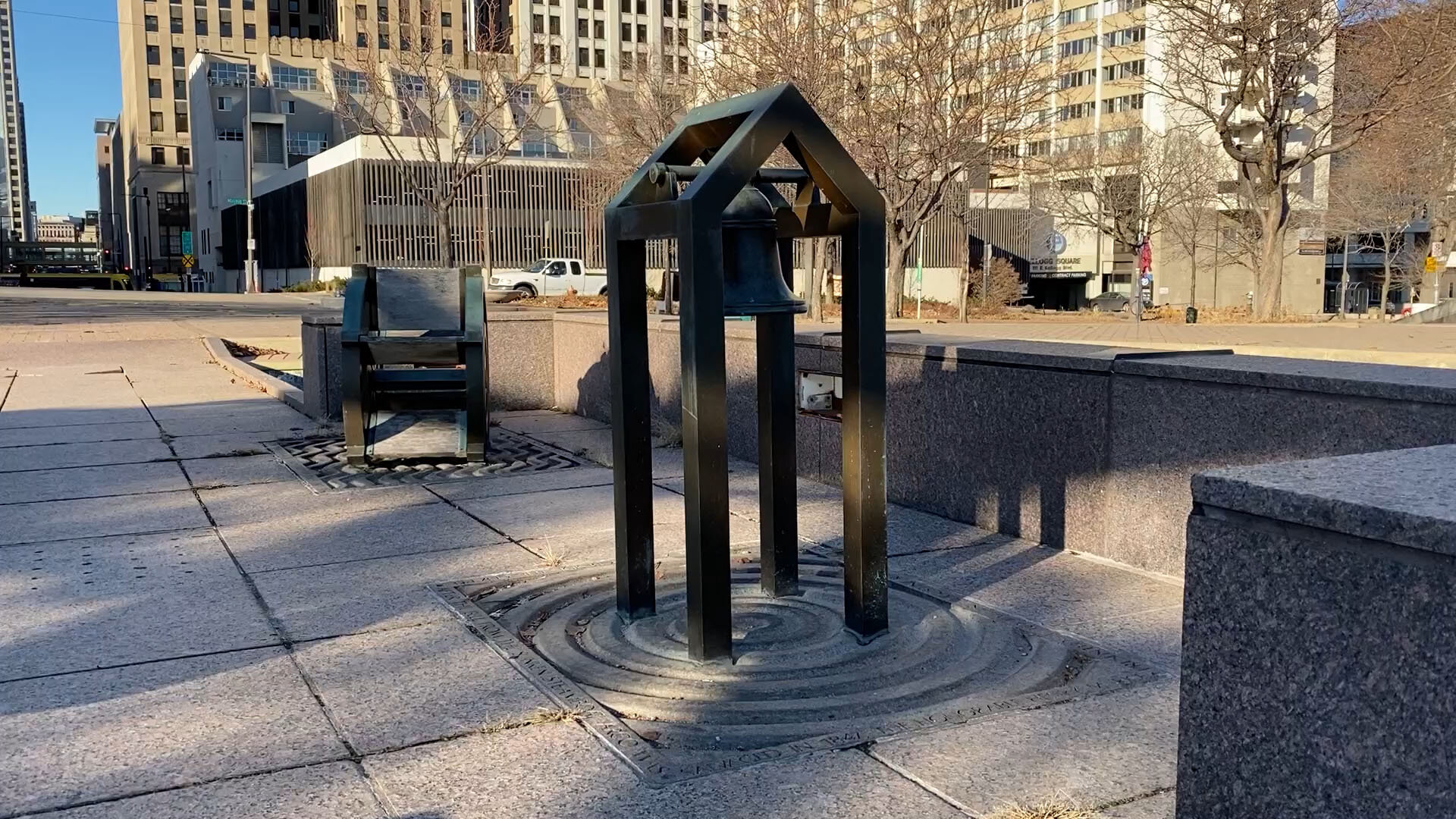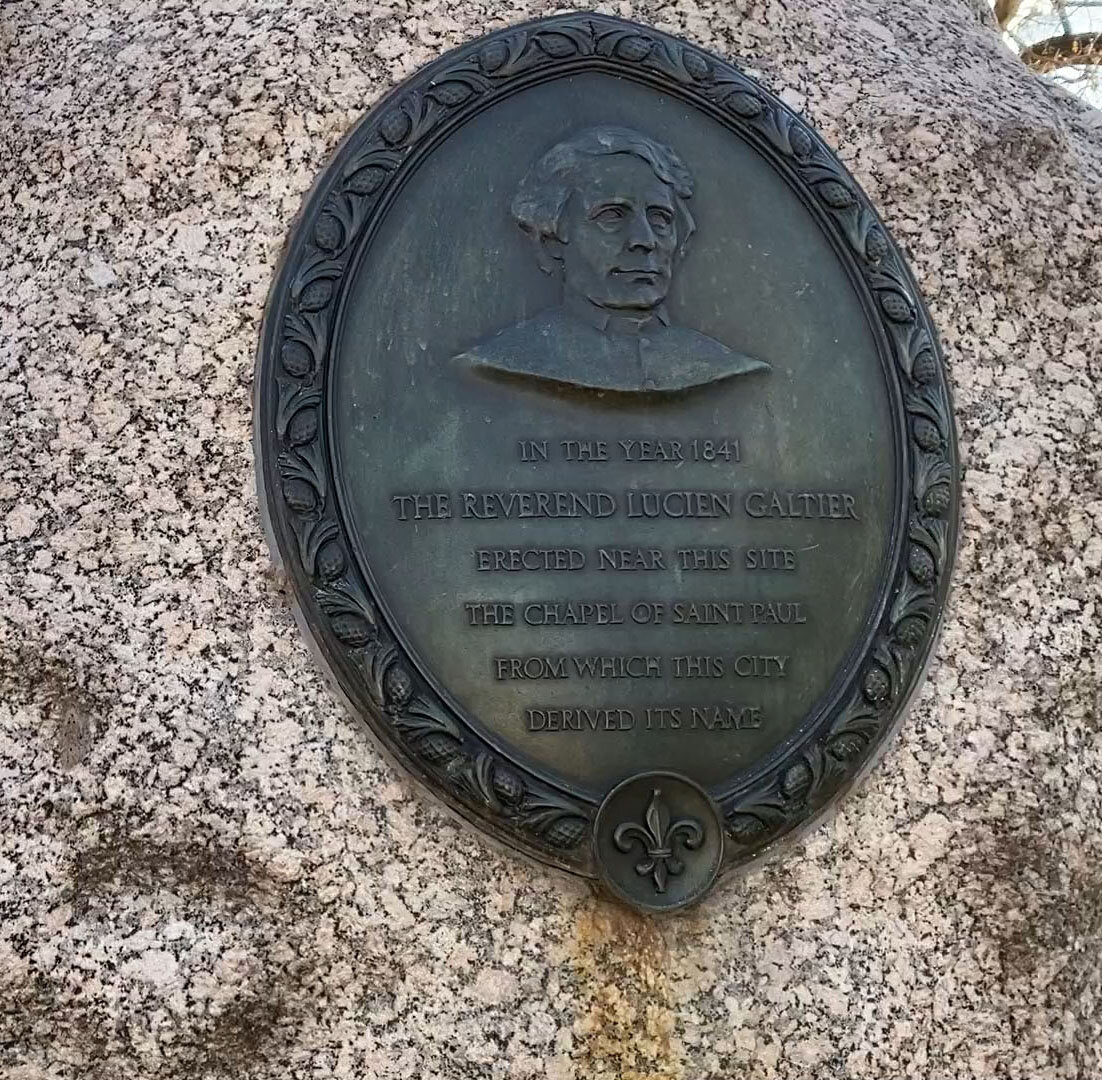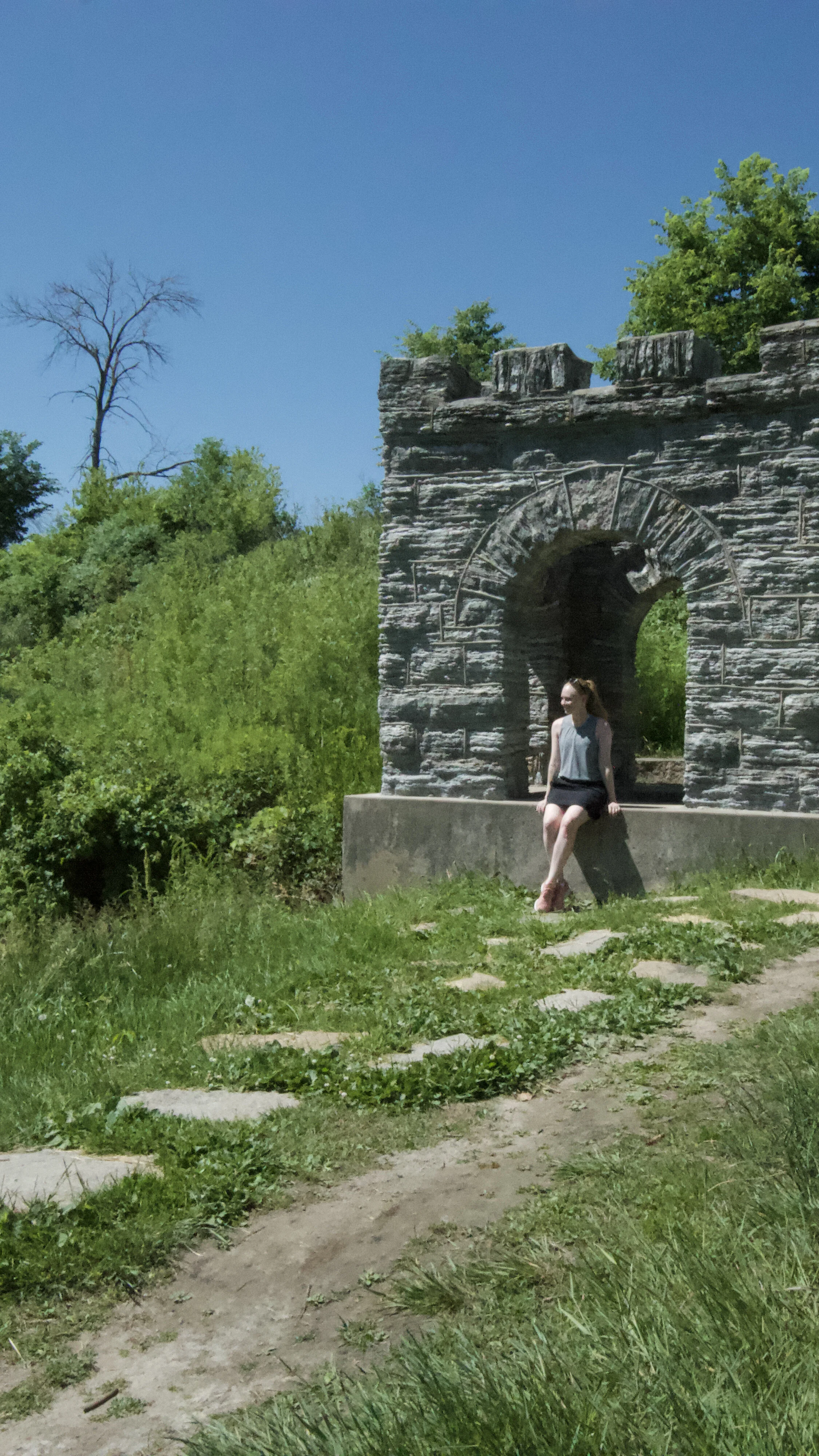Capital of MN: Pig's Eye
If the founding fathers of St. Paul were alive today they could hold a masterclass on public relations. They could make YouTube videos about rebranding and train celebrities how to bury their scandalous past. They were ahead of their time, knowing that “image is everything”, and successfully created a stately persona for the capital city. But beneath the studious, serious, sensible surface lies a truth that today would earn headlines on TMZ.
SINNERS AND SAINTS
Saint Paul, the wise older “Twin”, has long believed itself better than its younger, flashier sibling. Even as early as the 1930s, a travel guide described the rivalry: “St. Paul has already attained a degree of mellowness and seems to be clinging to its Victorian dignity, while in Minneapolis dignity is less prized than modern spruceness.” Not much has changed. Beneath that “saintly” surface, lies a much more scandalous past.
The fledgling village on the Mississippi grew up, not around missionaries in chapels or educators in schools, but around a crook in a cave.
Pierre “Pig’s Eye” Parrant arrived near Fort Snelling in 1832. His nickname reflected his unusual appearance caused by being blind in one eye. He also had a criminal history and made his living selling moonshine to the soldiers and settlers.
In 1838, the fort expanded and he was forced to move. Understanding the value of “location, location, location” he set up shop, just a couple miles downriver in a shack outside of Fountain Cave. The cave provided natural spring water for his whiskey, cool caves for storage, and his customers could paddle right up to his doors. By building his house/saloon, Parrant became the first official resident of the area. Within a year, Pig’s Eye’s outpost was a familiar landmark that it was successfully used as a return address on mail.
MAN ON A MISSION
When Father Lucien Galtier arrived in 1841 he was dismayed by the less-than-pious mascot of the up and coming territory. He made it his mission to turn things around. With the help of volunteers, Gaultier built a Catholic log cabin chapel. According to legend he proclaimed, "Pig's Eye, converted thou shalt be, like Saul; Arise, and be, henceforth, Saint Paul!" In reality, he started listing St. Paul on birth, death, and other official notices and the new name caught on..
Saint Paul may have stuck, but they still weren’t getting rid of Pig’s Eye Parrant. In 1842, he got into a territorial war with his neighbor, Michel LeClaire. The justice of the peace ruled that neither had a legal claim. He ruled that a foot race back to the disputed property-a distance of eight miles- would be winner takes all.
Being well into his sixties, Parrant accepted defeat and finally quit the area. There are a lot of theories about where he went next, but what really became of him remains a mystery.
SAINT PAUL SPELUNKERS
With Pig’s Eye gone, Fountain Cave became a tourist attraction and for thirty years people came in the summer to enjoy the cool air and water inside the cave. A pavilion was built outside the entrance that sold ice cream and candles to light visitor’s paths into the caves.
Expanding railroad lines diverted sewage into the caves and caused the entrance to collapse. By 1960, the cave had filled with debris and the entrance was completely buried during the construction of Shepard Road. Today, the only sign of its existence is a roadside historical marker.
Surprisingly, Pig’s Eye and his notorious namesake status isn’t the only embarrassing blunder Saint Paul hides under its hat.
FRONTIER FILIBUSTER
In 1857, the territorial legislature passed a bill proposing to move the capital across the river to St. Peter (now Mendota). This was mainly because then Governor Willis Gorman and his fellow democrats owned a lot of land there. Land that would make a nice capital. After the bill was passed, the next step in the process would be for the Enrolled Bills Committee to certify the language and deliver it to the Governor for his signature.. The Chair of that committee was Joseph Rolette.
A colorful character, Rolette was also firmly in the camp of legislators and land owners who wanted to keep the capital in St. Paul. Out of options, Rolette physically took the only copy of the bill and disappeared. For five days, Rolette hid at a hotel (maybe a brothel) playing cards and getting rip-roaring drunk. His absence was aimed to keep the bill from passing while the clock ran out on the legislative session.
“Jolly Joe’s” heroically hedonistic act didn’t stop the bill and what happened after he returned to the legislature is pretty boring. In the end, the capital remained in St. Paul and Minnesota became a state in 1858.
HIDDEN HEROES
It’s too bad neither man’s story gets much attention anymore. They are both so full of ingenuity and persistence, examples of the grit required to establish a new frontier.
Pig’s Eye Parrant does have a namesake lake and regional park named after him - though many mistakenly believe it is a tribute to the now shuttered slaughterhouses of an earlier era. There was briefly a beer named after Pig’s Eye and bore his likeness, but alas, it did not last.
Joseph Rolette has absolutely no tribute to commemorate his actions. There was a portrait of him in the Minnesota Club, but it is unclear if it is still there after new ownership.
Wouldn’t it be great if instead of anonymous corporate names we had arenas with personality, like Pig’s Eye Arena or Jolly Joe Field? Loosen up, Saint Paul, have a little fun!
Kellogg Mall Park is a nice little spot to visit if you want to see a remembrance of St. Paul’s beginnings. Originally built in 1931, Kellogg Mall Park is a four block long park along the Mississippi River in downtown St. Paul. Father Galtier’s log cabin chapel sat on the land that encompasses the park today.
A sad side note: The little chapel became dilapidated and was dismantled about 1856. Its logs were carefully numbered and later hauled up St. Anthony hill to the site of St. Joseph’s Academy. The intention was to rebuild the chapel and preserve it as a relic. No one told the men who were working on the construction of the Academy what the logs were for and they burned them to warm their hands and make coffee. Two fragments survived and were used to make gavels for the St. Paul Cathedral and the Minnesota Historical Society. By 1907, these, too, had disappeared.
Kellogg Mall Park was renovated in 1987 with a focus on commemorating historical elements through art and sculpture. The “History Walk” incorporates six images: oak leaves, a campfire, a trap, wheat, a steel bridge, and a dragonfly. An arbor, fountains, and benches are a nice place to take a rest, take some photos, and see the downtown skyline.
If you’re in St. Paul for a hockey game at the Excel Center or a show at the Ordway, take a minute to stroll through the park and remember what might have been.














